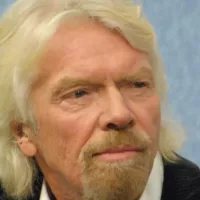Hungary is a landlocked country in Central Europe, situated in the Carpathian Basin and bordered by seven countries. Its population is 9.6 million, primarily ethnic Hungarians, with a Romani minority. The official language is Hungarian. Budapest is the capital and largest city, serving as the cultural and economic hub.
1941: Jewish Population
Between 1941 and 1944, over 800,000 Jews were living within Hungary's borders.
July 1944: Deportation of Jews
Between 15 May and 9 July 1944, over 434,000 Jews were deported from Hungary during the Holocaust.
1945: End of Holocaust
It is estimated that just over 564,000 Hungarian Jews were killed between 1941 and 1945 during the Holocaust in Hungary.
1980: Peak Population
In 1980, Hungary's population peaked at 10.8 million.
2008: Financial Crisis
During the 2008 financial crisis, Hungary's unemployment rate reached 11%.
2010: Researchers per Million Inhabitants
In 2010, Hungary had 2,131 full-time equivalent researchers per million inhabitants.
2011: Language Statistics
According to the 2011 census, 9,896,333 people speak Hungarian in Hungary.
2011: Census Results
According to the 2011 census, there were 8,314,029 ethnic Hungarians, 308,957 Romani, 131,951 Germans, 29,647 Slovaks, 26,345 Romanians, and 23,561 Croats in Hungary.
2011: Government Program to Increase Birth Rate
In 2011, the conservative government began a program to increase the birth rate among ethnic Magyars by reinstating three-year maternity leave and boosting the availability of part-time jobs.
2012: UNESCO Memory of the World Register
Until 2012 three individuals—Csoma, János Bolyai and Tihanyi—were included in the UNESCO Memory of the World register as well as the collective contributions Tabula Hungariae and Bibliotheca Corviniana.
July 2013: Municipalities in Hungary
In July 2013, Hungary had 3,152 municipalities, including 346 towns and 2,806 villages covering the entire country.
2014: Tourism
In 2014, Hungary had 12.1 million international tourists.
2014: Researchers per Million Inhabitants
In 2014, Hungary had 2,651 full-time equivalent researchers per million inhabitants.
2015: Births to Unmarried Women
In 2015, 47.9% of births in Hungary were to unmarried women. Life expectancy was 71.96 years for men and 79.62 years for women.
2015: Gross Metropolitan Product
In 2015, Budapest's gross metropolitan product was more than $100 billion.
2015: Export Economy
In 2015, Hungary's export economy saw more than $100 billion in exports, with a trade surplus of $9.003 billion. 79% of exports went to the EU.
2015: Foreign Direct Investment
In 2015, Hungary's inward Foreign Direct Investment (FDI) was $119.8 billion, while investing more than $50 billion abroad. Key trading partners included Germany, Austria, Romania, Slovakia, France, Italy, Poland and Czech Republic.
2017: Employment Rate
In 2017, Hungary's employment rate was 68.3%, with the service sector employing 63.2% of the workforce, industry 29.7%, and agriculture 7.1%. The unemployment rate was 4.1%.
2018: Hungarian Nobel Prize Winners
As of 2018, thirteen Hungarian scientists have been recipients of a Nobel Prize.
June 2020: Net-Zero Emissions Target
In June 2020, Hungary passed a law binding itself to a target of net-zero emissions by 2050.
2020: Civil Research and Development Spending
In 2020, Hungary spent 1.61% of its gross domestic product on civil research and development.
2021: Population in Hungary
In 2021, Hungary's population was 9,689,000 according to the Hungarian Central Statistical Office.
2022: Religious Affiliation
The 2022 census showed that 42.5% of Hungarians were Christians, with Roman Catholics (27.5%) and Hungarian Reformed Calvinists (9.8%) being the largest groups. 40.1% of the population did not declare a religious affiliation.
March 2024: Free railway transport
From March 2024, transport on the Hungarian railway MÁV will be free for people aged 65 and over and under 14 years of age.
2024: Global Innovation Index Ranking
In 2024, Hungary was ranked 36th in the Global Innovation Index.
2030: National Energy Strategy
Hungary extended its National Energy Strategy 2030.
2040: Energy Policy Outlook
Hungary added an energy policy outlook until 2040.
2050: Net-Zero Emissions Target
By 2050, Hungary aims to achieve net-zero emissions.
Mentioned in this timeline
Germany officially the Federal Republic of Germany is a Western...
France officially the French Republic is primarily located in Western...
Italy officially the Italian Republic is located in Southern and...
Poland officially the Republic of Poland is a Central European...
Slovakia officially the Slovak Republic is a landlocked Central European...
Time is the continuous irreversible progression of existence from past...
Trending

33 minutes ago Julian Sayin: Ohio State's Key to Michigan Victory; Quarterback's Debut Anticipated

2 hours ago Chris Pratt Upholds Christmas Tradition for Katherine Schwarzenegger After Marital Agreement.
2 hours ago Ernest Hausmann questionable for Michigan vs. Ohio State game due to injury.

2 hours ago Tyler Adams, USMNT Captain, Astonishes with Long-Range Goal for Bournemouth!
2 hours ago Monaco vs PSG: Ligue 1 clash for leadership, live streaming details, and Enrique's injury woes.

2 hours ago Caleb Downs' Future Uncertain Amidst Awards Nomination and Speculation About Leaving Ohio State.
Popular
Aftyn Alyssa Behn is an American politician currently serving as...

William Franklin Graham III commonly known as Franklin Graham is...

Candace Owens is an American conservative political commentator and author...

XXXTentacion born Jahseh Dwayne Ricardo Onfroy was a controversial yet...

Marjorie Taylor Greene known as MTG is a U S...

Richard Branson is a prominent English business magnate best known...